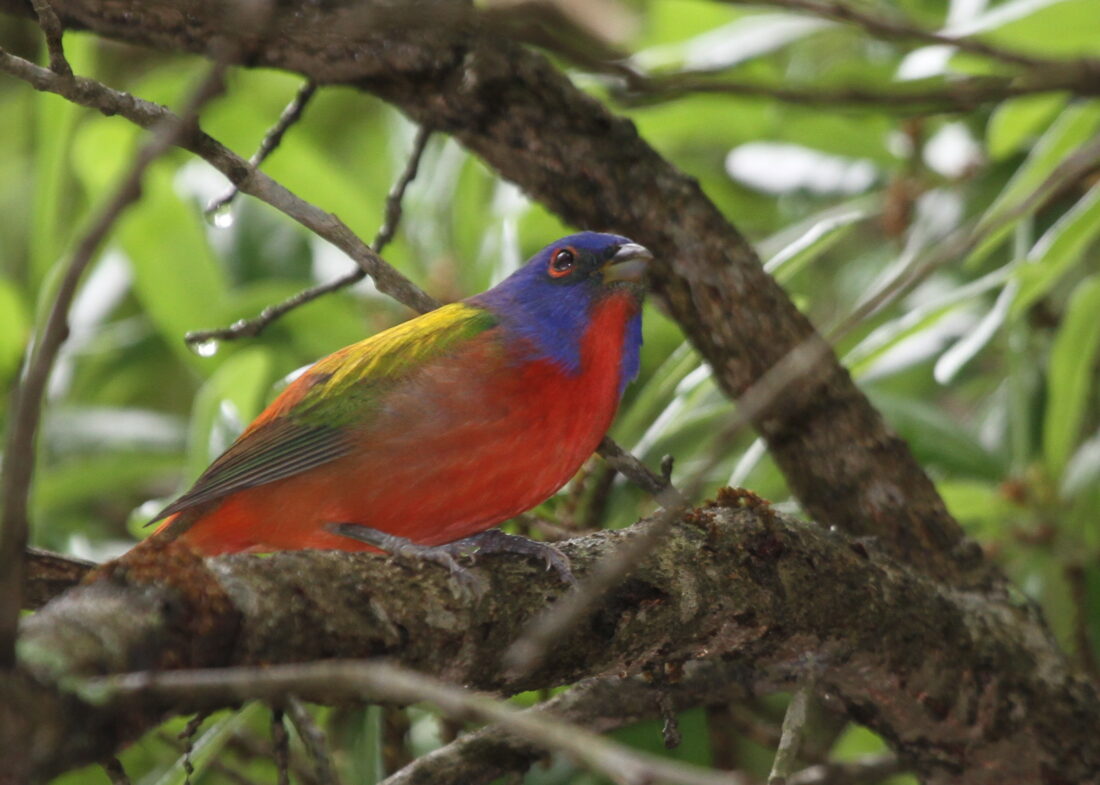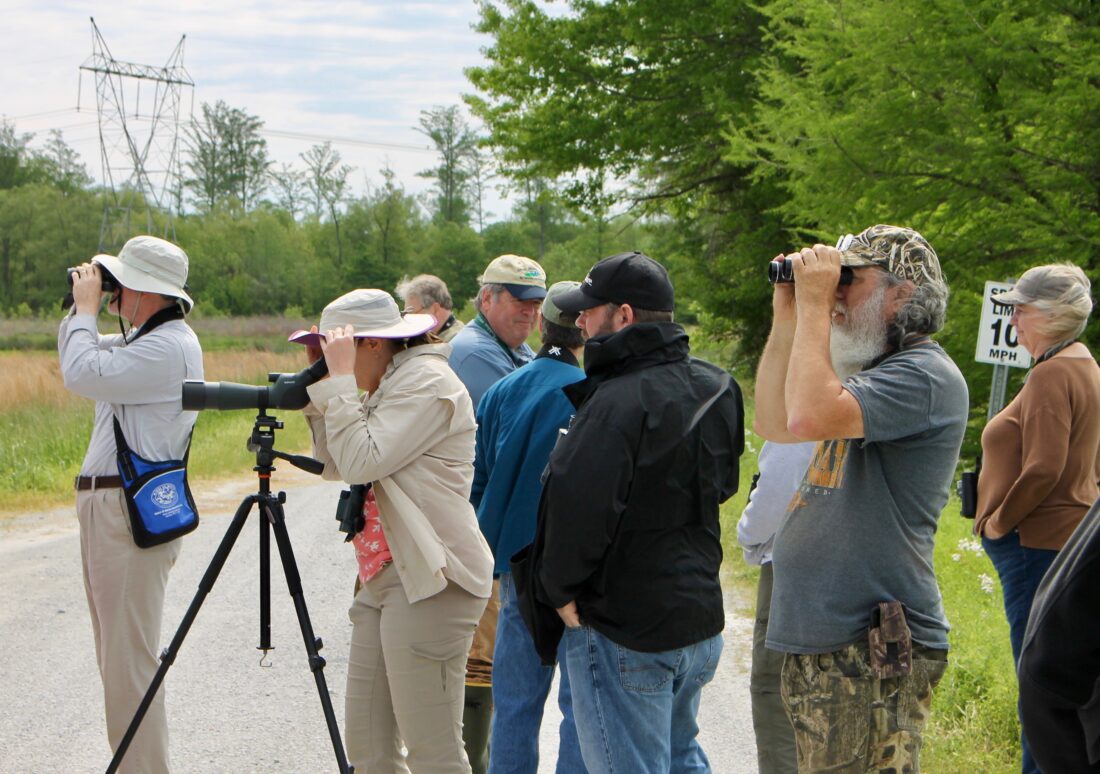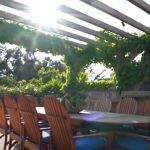Birders remember the specific moment they caught sight of a rare winged beauty for the first time. I’ll never forget April 16, 1989. I had taken a break from visiting my in-laws in New Orleans and traveled to Grand Isle, Louisiana, with a local ornithologist. The early morning was eerily quiet. And then, at precisely 11:30 a.m., it happened: the fabled “spring fallout,” when a dazzling array of songbirds filled the trees, the trails, and the sky. An ornithology major at the time, I scribbled “16 April 1989” eighty-four times in the margins of my National Geographic Field Guide to North American Birds to record each new species I identified that day.
From a longtime bird lover, here are seven destinations where you might wear out the margins in your own field guide, whether you choose to flock with other feather fanatics or fly solo.
Grand Isle Migratory Bird Celebration
Grand Isle, Louisiana
April 25–26
As spontaneous as it felt for me at the time, the spring fallout is somewhat predictable. Almost all neotropical songbirds migrate at night, avoiding predators (most raptors are diurnal migrants) and using the stars to navigate across the Gulf of Mexico. Storm systems can also “shove” birds ashore. After an incredible eighteen-hour flight, these individuals, many weighing less than half an ounce, alight on the first land they see, the marshes and oak-hackberry woods of Grand Isle. Explore the Lafitte Woods Preserve or consider an expert-led tour on the Grand Isle Birding Trail during the annual celebration in April.
A Texas Two-Fer
FeatherFest Birding & Nature Photo Festival
Galveston, Texas
April 24–27
A birdwatcher at the twenty-second annual FeatherFest.
You don’t need a festival to see impressive species diversity outside of Galveston, but if you want to join in, you can’t go wrong with the twenty-third annual FeatherFest. The barrier island city is the first in the state to receive Texas Audubon’s “Bird City High-Flyer” recognition for its conservation efforts. In addition to workshops and lectures, FeatherFest attendees reliably see more than two hundred species over the course of the festival.
And don’t forget Corpus Christi, the self-declared Birdiest Place in America, with over three hundred species sighted annually. The Birdiest Festival in America (April 23–27) rivals major international avian showcases with dozens of field trips and workshops as well as multiday pre- and post-trips to the Rio Grande Valley.
Colonial Coast Birding Trail
Kingsland, Georgia

A painted bunting spotted in a tree.
The best birding is found when you tromp across multiple habitats, and Kingsland’s five-hundred-acre Crooked River State Park has plenty, from salt marshes to pine forests. The list soars to 322 species, ranging from palette-worthy painted buntings to peregrine falcons, the fastest species on Earth. Kingsland and nearby barrier islands serve as beacons for migrants as they move northward along the “Eastern Flyway” to nesting environments as far as Labrador, Canada.
Hatchie BirdFest
Brownsville, Tennessee
April 25–27

Birdwatchers at the Hatchie BirdFest.
Birds spy “inland habitat islands” far from the coastline when migrating, critical environments increasingly isolated due to development and resource extraction. The Hatchie National Wildlife Refuge offers 11,556 acres where birds can rest and refuel as they continue their journey to northern nesting locations. Nearly ten thousand acres of bottomland hardwood forest attract songbirds that gorge on emerging larvae and insects. Hatchie BirdFest kicks off with a concert and features expert-led walks that include nocturnal forays in search of nightjars and owls.
J.N. “Ding” Darling National Wildlife Refuge
Sanibel Island, Florida
I was scheduled to fly to Ft. Myers for a birding and nature story a few Aprils ago when COVID-19 snatched my travel plans like a local red-shouldered hawk capturing a vole. My malaise intensified when the local expert I was planning to join texted to say he’d seen a whopping 125 species on the day of our planned outing. I’m not a lister/twitcher (birding speak for one who values quantity of species over quality of viewing), but missing this spring fallout still smarts. Fortunately, the 6,400-acre “Ding” Darling NWR will deliver an impressive array of wildlife when I am able to finally alight there, from over 225 avian species to nesting sea turtles and male alligators “bellowing” throughout the spring in search of a mate.
Florida’s Birding & Photo Fest
St. Augustine, Florida
April 23–27
When I taught ornithology, I’d instruct students to spot the bird with their naked eyes and slowly bring their binoculars up to look through the lens. If one practices for long enough, this skill becomes second nature. In avian photography, however, factors like branches, shadows, and bird movement present unique frustrations. And then there’s the composition to think about. With almost a hundred photography seminars, field trips, and field workshops led by several of the world’s leading wildlife photographers, Florida’s Photo Fest is a must-do for those of us longing to compose better bird shots.
Santee Birding & Nature Festival
South Carolina
April 26–28
It’s incredible that such a wild place exists less than an hour-and-a-half’s drive from all the cultural charms of Charleston—what could be better than strolling along the painted houses of Rainbow Row, hopping in the car, and then seeing all the colorful wildness on display at the Santee National Wildlife Refuge? Two hundred ninety-six species have been found on the refuge, including more than thirty-five different warblers that use the refuge as a key stopping point on the Eastern Flyway. The Santee Festival provides an excellent introduction to nature appreciation beyond bird study, including naturalist-led tours on foot and by paddle. Miles of biking and hiking trails create the perfect “mixed modality” experience for taking in all that birdsong.







